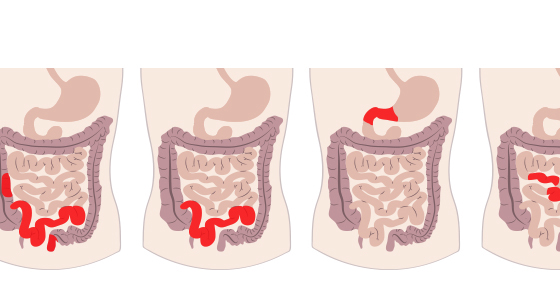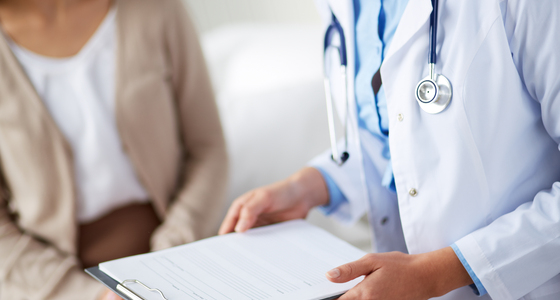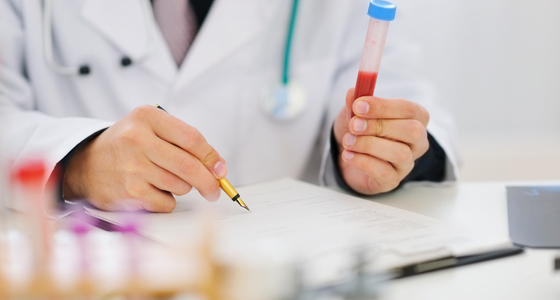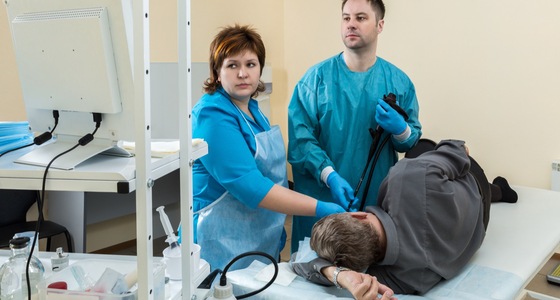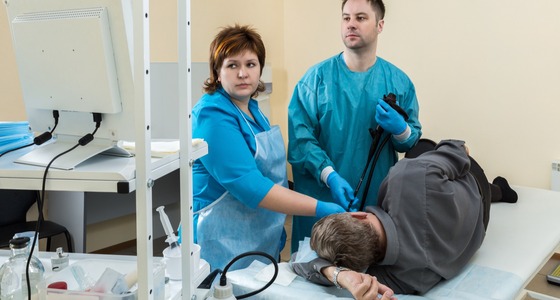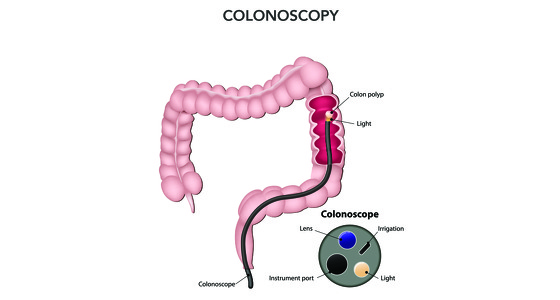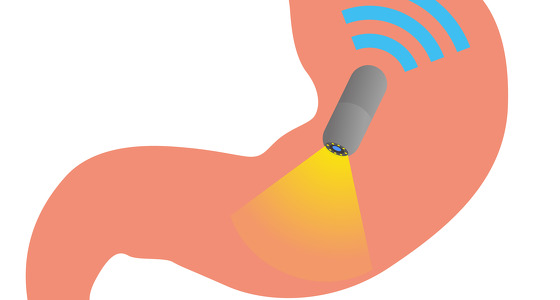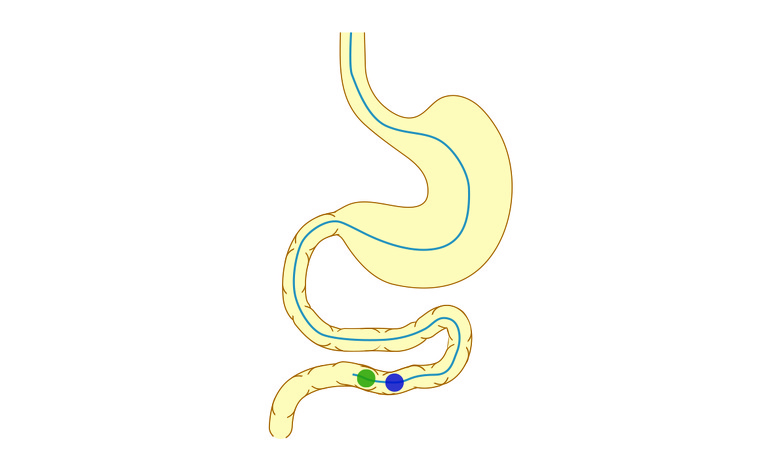
A double balloon endoscopy (DBE) is a fairly new type of endoscopy which is used to look into the small bowel (intestine). It was developed in 2001 in Japan and is now widely used in assisting with diagnosis and monitoring of Crohn’s disease (a type of inflammatory bowel disease (IBD)).
The DBE is a very long endoscope with two balloons on the end. The balloons are alternately inflated and deflated. The balloons grip to the wall on the intestine and the endoscope slides into the bowel as this is done with the aid of an overtube.
DBE is often used if a capsule endoscopy or other tests find abnormalities in the small bowel which require further examination. As well as viewing the small intestine the DBE can also take biopsies and perform some treatment techniques.
A double balloon endoscopy is used when Crohn’s disease is suspected to view the lining of the small bowel for any signs of ulceration or abnormalities. It is also used in people who have diagnosed Crohn’s disease in their small bowel to monitor their condition.
It may also be used to assist in the place of feeding tubes such as a jejunostomy or to help in the treatment of strictures.
DBE procedures are usually carried out in hospital as day cases. You will probably be offered general anaesthetic, sedatives and/or painkillers to make you more comfortable while the DBE is carried out.
The DBE will either be carefully inserted through your mouth or anus, depending on which part of your small bowel needs to be accessed. Pictures from the endoscope are displayed on a monitor while the procedure is taking place.
During the procedure some biopsies may be taken.
After the procedure the doctor or nurse may discuss some of the findings with you, or you may be given a follow-up appointment. If biopsies have been taken then the results of these may not be available for several weeks. The results will be sent back to your doctor/consultant who can discuss them with you.
You should be able to go home the same day.
If you have had any sedatives you will not be able to go home until the effects have worn off (usually several hours).
If you are having a DBE to aid diagnosis of Crohn’s disease then the doctor or nurse will be looking at the lining of your small intestine and rectum to see if there are any signs of the disease.
If you have already been diagnosed with Crohn’s disease then the DBE will be used to check and monitor the extent and level of inflammation in your small intestine.
General anaesthetic or sedation are often used with a DBE procedure so you shouldn’t feel it taking place.
The intestinal tract needs to be clear for the DBE to be able to view your small intestine. If it is being inserted through your mouth then you will probably need to fast for around six hours before. If it is being inserted through your anus then you will probably be given a bowel preparation to take the day before. This causes diarrhoea so that all waste is cleared out from the bowel. Your doctor will discuss with you what preparation you need to do.
You may be asked to stop taking some medication - such as warfarin, aspirin or clopidogrel - as well as painkillers and iron tablets in the week before.
Preparing your bowel ready for the examination can be unpleasant and time-consuming, however, it is necessary to ensure the intestinal lining can be viewed clearly. If your bowel isn’t completely clear, and the endoscopist isn’t able to see your full bowel during the procedure, then you may have to come back for another DBE.
DBE procedures are generally very safe. Some of the common side effects include:
These usually clear up with two days.
There is an extremely small risk of bowel perforation during the examination by the endoscope. Major bleeding and risk of pancreatitis has also been reported. You may want to discuss the risks with the physician performing the test.
